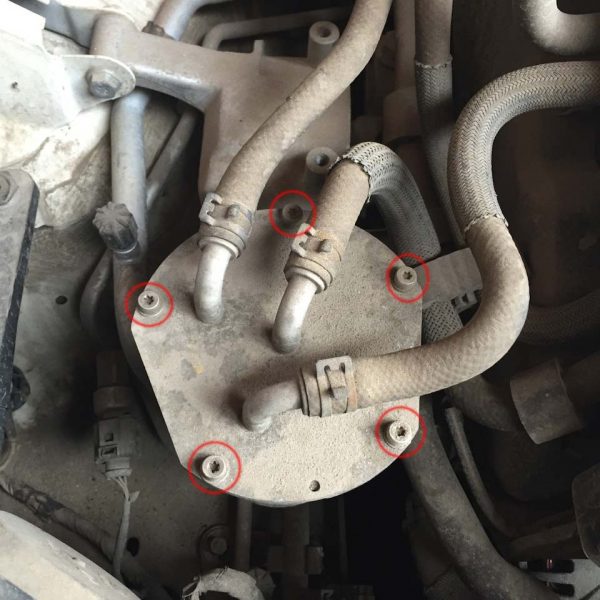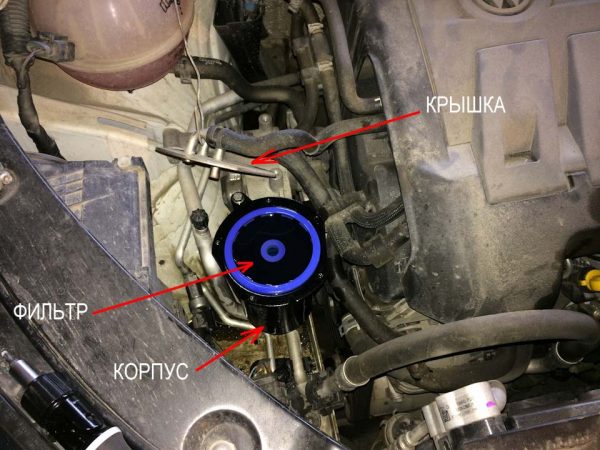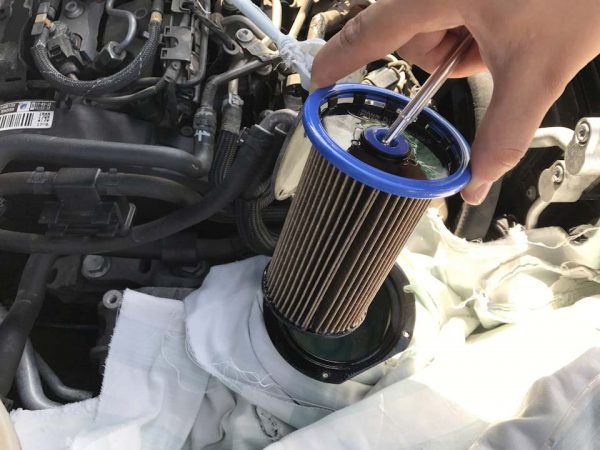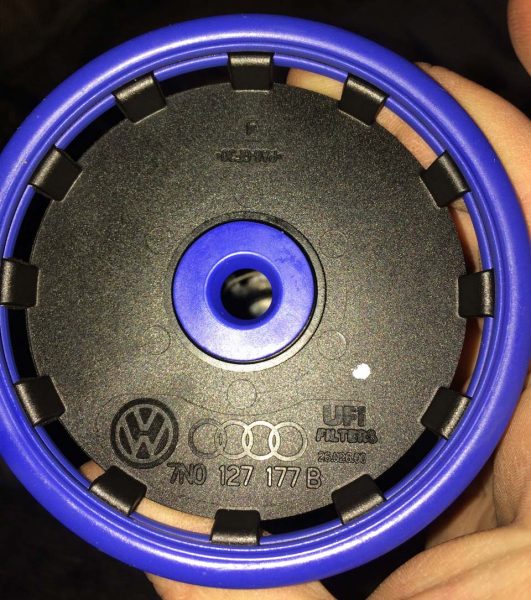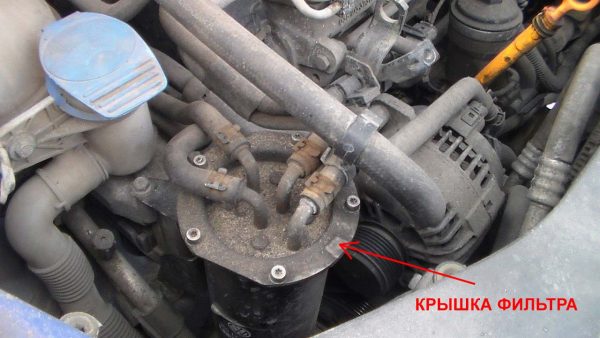
Fuel filter "Volkswagen Tiguan" - purpose and device, self-replacement
Content
The importance of a fuel filter for health and long-term operation of the power unit cannot be overestimated. Especially when you consider that the quality of Russian gasoline and diesel fuel leaves much to be desired. Modern fuel systems are very sensitive to impurities in the fuel. Even small particles as small as 20 microns can damage them. Chemical impurities - such as paraffin, olefin and tar, as well as water in diesel fuel, can disrupt its supply to the nozzles. Such consequences are eliminated by the operation of coarse and fine fuel filters.
Fuel filters in Volkswagen Tiguan - purpose, location and device
The purpose of the filter elements is to free the fuel from unnecessary and harmful mechanical and chemical impurities. It also ensures the safety of the fuel systems of gasoline and diesel engines from dust, dirt and rust. Filtering devices for gasoline and diesel engines "Volkswagen Tiguan" are different. Diesel fuel is cleaned by a filter located under the hood, in front of the high pressure fuel pump (TNVD). The filter device is located next to the engine. Diesel Common Rail systems are very susceptible to diesel quality.

Gasoline is filtered by coarse and fine cleaning devices located in the gas tank. The coarse filter is a mesh with small cells. Located in the same housing as the fuel pump.
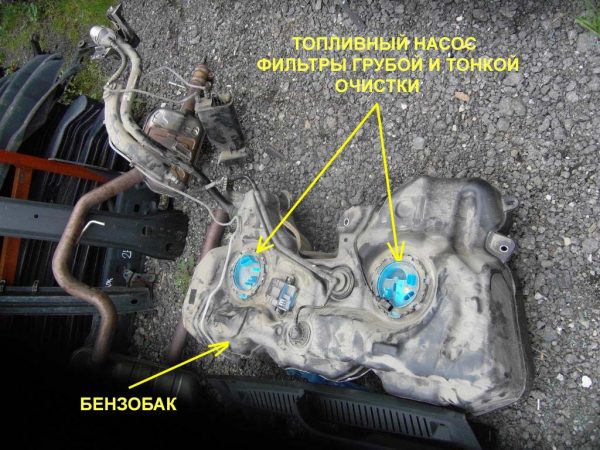
The diesel fuel filter device is simple. It has a cylindrical shape and a classic device. It is located in a metal glass, under the lid. The filter element is made of pleated cellulose impregnated with a special composition. The size of the cells in the paper, passing diesel fuel, is from 5 to 10 microns.

The replacement of the filter element, according to the recommendation of the automaker in the service books, should be done after every 30 thousand kilometers of travel. Since the quality of Russian-made diesel fuel is lower than that of European fuel, it is recommended to change it every 10-15 thousand km.
Fine filters for gasoline versions of the Volkswagen Tiguan are made in a non-separable case, so you will have to buy the entire assembly to replace it. In addition to the filter element, a fuel level sensor is located in the housing. The cost of the node is quite high - from 6 to 8 thousand rubles.

The filter system in the gasoline version of the Volkswagen Tiguan consists of the following elements:
- Fine fuel filter.
- Pump with strainer.
- Retaining rings.
- Floats of fuel level sensors.
The coarse mesh filter is located in the same housing as the pump. Both nodes organize the supply of fuel to the injection pump of an engine equipped with an FSI injection system.

On the recommendation of the automaker, filters should be replaced after 100 thousand kilometers of travel. Given the poor quality of gasoline, it is better to change filters earlier, after 50-60 thousand kilometers.
Fuel filter malfunctions and the consequences of their untimely replacement
Mesh and cellulose filters have only one malfunction - they become clogged over time with the accompanying mechanical and chemical components that are found in any fuel fluid. The consequences of clogging can manifest themselves in different ways:
- computer diagnostics issues fuel system trouble codes;
- the engine starts for a long time or does not start at all;
- the motor is unstable at idle;
- when you sharply press the accelerator, the engine stalls;
- fuel consumption increases;
- traction drops in a certain range of engine speeds, usually from 2 to 3 thousand;
- jerks accompanying the movement of a car at a constant speed.
The above symptoms appear when the filter change time is significantly overdue or the car is refueled with low-quality fuel. These malfunctions are not always manifested due to fuel filters. There may be other reasons - for example, a malfunction of the fuel pump. The ingress of water into diesel fuel leads not only to the replacement of the filter element, but also to the overhaul of the fuel system. If the filter element is replaced on time, many of the above problems can be avoided.
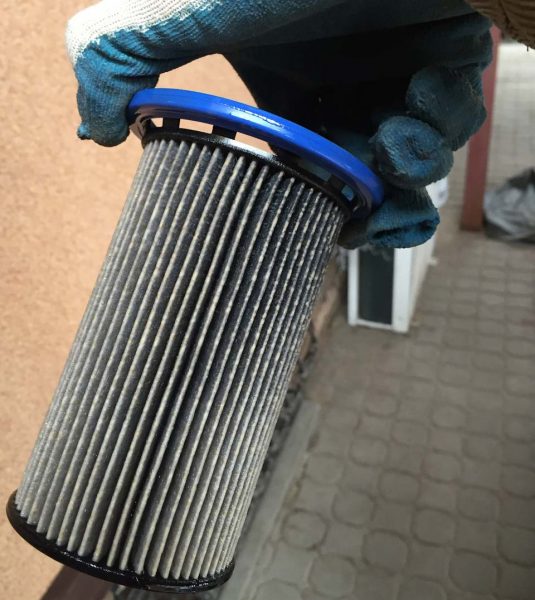
Another common malfunction is fuel leakage at the points where the fuel lines are connected to the filter housing, caused by a poor-quality connection. A leak can be determined by the presence of fuel under the car, in the place of its parking. Sealing gaskets can also leak - this can be detected by the presence of diesel fuel leaks near the cover of the housing in which the filter element is located. In gasoline Volkswagen Tiguan, it is quite difficult to visually detect malfunctions, since access is difficult due to the location of the filters under the passenger seats of the second row. Fuel leakage can be identified by the smell of gasoline in the cabin.
Maintainability of fuel filters
Self-replacement of the fuel filter in a diesel Volkswagen Tiguan
The process of replacing the diesel filter is simple. The car does not need to be driven into a viewing hole or lifted on a lift. To do this, prepare such improvised means:
- new filter complete with gasket;
- wrench with Torx 20 head;
- syringe with a thin hose;
- slotted screwdriver;
- rags;
- an empty container for diesel fuel, with a volume of 1–1.5 liters.
Work order:
- The wrench unscrews five bolts fixing the cover of the container with the filter.
 In order to remove the cover, you need to pry it with a screwdriver and squeeze it from the body around the entire circumference
In order to remove the cover, you need to pry it with a screwdriver and squeeze it from the body around the entire circumference - The lid is lifted, while the filter element is held with a screwdriver so that it does not reach for the lid, but remains in the housing.
 In order to remove the filter, you need to carefully move the cover to the side without removing the fuel lines.
In order to remove the filter, you need to carefully move the cover to the side without removing the fuel lines. - A tube put on a syringe is inserted into the central part of the filter element, diesel fuel is pumped out of the housing.
 The fuel is pumped out so that debris can be removed from the bottom of the glass in which the filter is located, as well as accumulated water
The fuel is pumped out so that debris can be removed from the bottom of the glass in which the filter is located, as well as accumulated water - After the body is cleaned of debris, dirt and wiped dry, a new filter is inserted into it.
 The filter element has no fasteners, it is freely located inside the housing
The filter element has no fasteners, it is freely located inside the housing - Clean diesel fuel is slowly poured into the filter housing to soak all the paper of the filter element.
- The rubber gasket of the new filter is lubricated with diesel fuel.
- The cover is put in place, the bolts are tightened.
This completes the filter element replacement procedure. Do not start the engine yet, you should prevent air from entering the fuel system.
How to get rid of air in the fuel system after replacing the filter
The easiest way to bleed the fuel system is to turn on the ignition a couple of times without starting the starter. In this case, the sound of the included fuel pump should be heard. Turning on, it pumps fuel and squeezes the air plug out of the system. There is another option - to use a laptop with service software for VAG cars and a diagnostic connector.

Menu selection sequence:
- Selecting a control unit.
- Engine electronics.
- Choice of basic parameters.
- Activation of the function Transfer fuel pump fp test.
As a rule, after such an operation, the engine starts immediately.
Video: replacing a diesel fuel filter element in a Volkswagen Tiguan diesel engine
Do-it-yourself replacement of the Volkswagen Tiguan gasoline filter
Access to the fuel pump with a strainer, as well as to the fine filter device, is located in the passenger compartment, under the second row of passenger seats. When viewed in the direction of the car, the pump is located under the right seat, and the filter element is under the large sofa for two passengers, located on the left. In order to replace, you will need to purchase new fine and coarse filters. The mesh filter is located in the housing with the pump. For work, you should purchase and prepare improvised tools and tools:
- new fine fuel filter assembly;
- a new mesh from the fuel pump VAZ 2110;
- vacuum cleaner and rags, for cleaning dirt;
- wrench 17, to remove the seats;
- hammer and slotted screwdriver.
To perform the work, a viewing hole or overpass is not required. The work is done in the following order:
- The second row of passenger seats is removed. To do this, use the key on 17:
- the seats are moved forward, 4 bolts are unscrewed from the side of the luggage compartment, securing their skids;
- under these seats, from the side of the foot mats, 4 plugs are removed and the fastening nuts are unscrewed;
- The seats fold in and out through the luggage compartment.

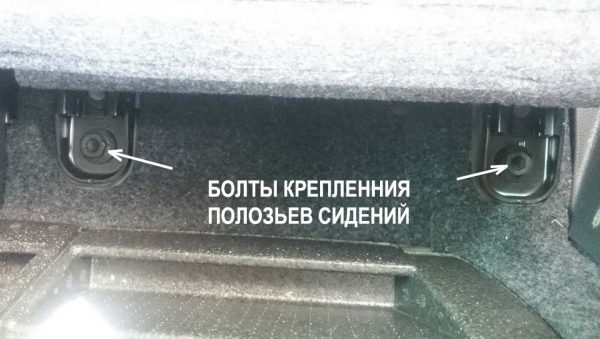 For unscrewing, it is better to use a socket or spanner wrench.
For unscrewing, it is better to use a socket or spanner wrench.
- The decorative rugs located under the removed seats are removed.
- Using a socket screwdriver, remove the two rubber gaskets that close the gas tank compartment.

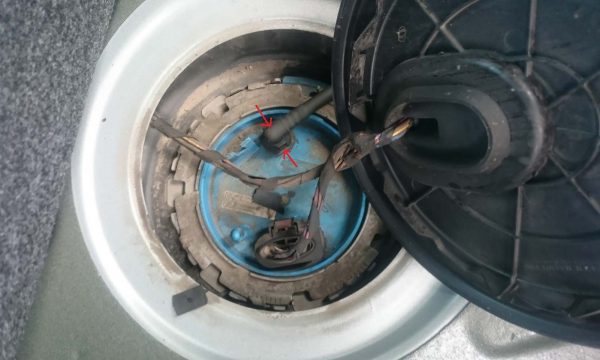 All surfaces under the protective pad must be cleaned of dust and dirt with a vacuum cleaner and rags.
All surfaces under the protective pad must be cleaned of dust and dirt with a vacuum cleaner and rags. - Electrical connectors and fuel lines equipped with clamps are disconnected. To do this, the connector and the hose are slightly recessed, after which the latches are pressed on both sides and the connector is removed. There are latches that require special attention (see the video below).
- The retaining rings fixing the pump and filter housings are dismantled. To do this, install a slotted screwdriver in the stops and gently slide each ring, tapping on the screwdriver with a hammer.

 At service stations, the fixing rings are dismantled with a special puller, which, when reinstalled, tightens each ring with a force of 100 N * m
At service stations, the fixing rings are dismantled with a special puller, which, when reinstalled, tightens each ring with a force of 100 N * m - The pump and fuel filter housings are removed from the gas tank. In this case, care must be taken not to damage the floats of the fuel level sensors that are present in both cases.
- The coarse filter mesh located in the pump housing is replaced:
- the fuel pump is removed from the housing. To do this, you need to remove its top cover, disconnect the two power wires and snap off the three latches. The fuel line is not removed, it just needs to be removed from the groove;
- the filter mesh is removed from the bottom of the pump, it is also fastened with three latches;

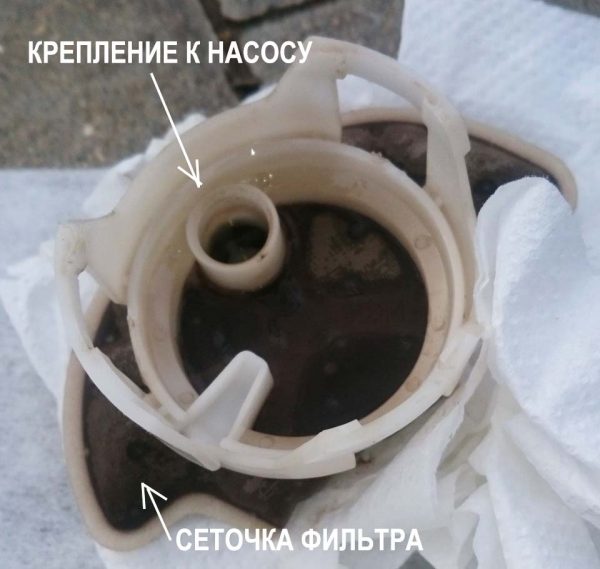 In order to remove the grid mount from the pump, you need to bend the latches
In order to remove the grid mount from the pump, you need to bend the latches - in place of the contaminated mesh, a new one is attached to the pump, from the VAZ-2110. The original mesh from VAG is not sold separately - only complete with a pump, and this is unreasonably expensive. The only negative is that the mesh from the VAZ does not have a fastener, but fits tightly into the pump hole. The experience of many motorists confirms its successful use.
- Assembly is carried out in the reverse order. It is necessary to carefully connect the fuel lines between the pump and the filter so as not to confuse them.

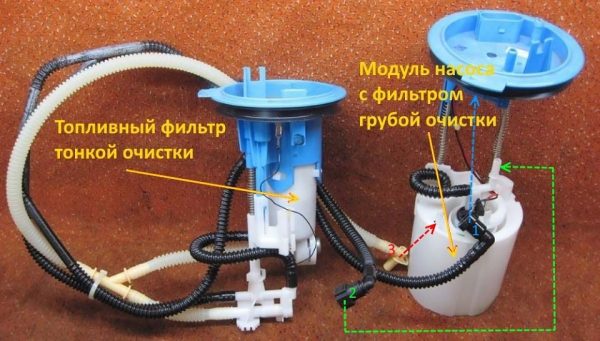 The arrows coming from the hoses indicate the places of their connection to the pump
The arrows coming from the hoses indicate the places of their connection to the pump - Do not overtighten the retaining rings. To do this, it is better to outline exactly how they were located before removing them.

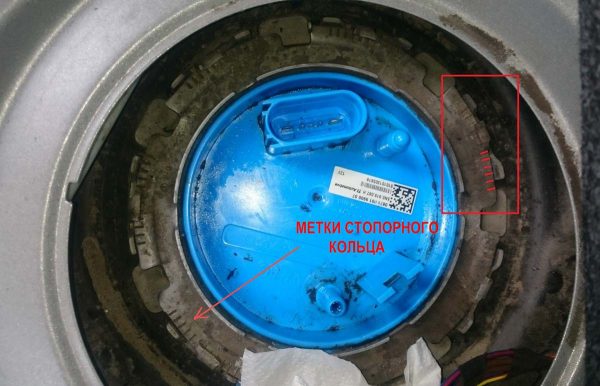 Aligning with the marks set prior to disassembly will allow the retaining ring to be tightened to the correct torque.
Aligning with the marks set prior to disassembly will allow the retaining ring to be tightened to the correct torque.
Before starting the engine for the first time, to create pressure in the fuel pump line, turn the ignition key a couple of times without turning on the starter. Thus, the fuel pump can be started. After the pump runs, the motor will start without problems. After installing rubber plugs and passenger seats, the car is ready for subsequent operation.
Video: replacing gasoline filters in a Volkswagen Tiguan


Watch this video on YouTube
As you can see, you can replace the fuel filters yourself - both in diesel and gasoline Volkswagen Tiguan. This does not require special knowledge and skills. All that is needed is accuracy and consistency of actions during the execution of work. Particular attention should be paid to the correct connection of the fuel pump petrol module to the fine filter. Replacement must be made earlier than specified by the automaker in the service books. Then the engines will work without breakdowns.


